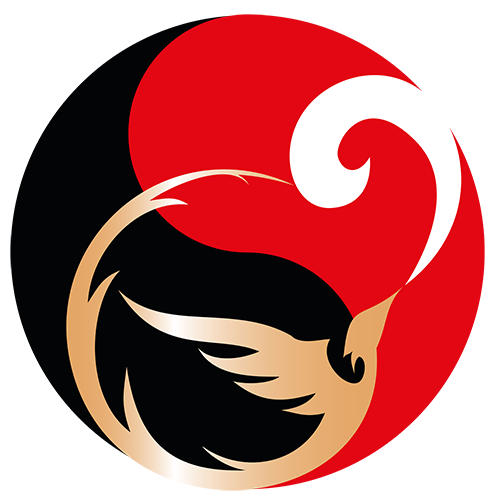Are you working longer hours but achieving less? You’re not alone. Research shows that 76% of professionals feel burnout while their actual output decreases—a productivity paradox affecting millions worldwide.
After coaching over 2,500 entrepreneurs, executives, and creatives across three continents, I’ve discovered that the most productive people don’t work more hours—they work differently. They’ve abandoned generic productivity hacks for something more powerful: personalized productivity systems aligned with their unique cognitive patterns.
The Hustle Culture Myth That’s Killing Your Productivity
The “rise and grind” mentality has created a generation of professionals who believe that:
- Working 80+ hours a week is necessary for success
- Being constantly busy equals being productive
- The same productivity systems work for everyone
- Rest is a luxury, not a necessity
This approach isn’t just ineffective—it’s counterproductive. Stanford University research shows that productivity per hour drops significantly after 50 hours per week, and plummets to nearly zero after 55 hours.
Most concerning? The people reporting the highest levels of burnout are often accomplishing the least meaningful work.
The Biological Reality: Your Brain Isn’t Designed for Continuous Output
Neuroscience offers compelling evidence against the “always-on” approach:
- Your prefrontal cortex (responsible for complex thinking) can only sustain about 4 hours of deep work daily
- Your working memory depletes throughout the day without proper recovery periods
- Your ultradian rhythm operates in 90-120 minute cycles, requiring breaks between periods of focus
- Your brain’s default mode network (essential for creativity and insight) only activates during downtime
When you ignore these biological realities, you’re not just working inefficiently—you’re actively fighting against your brain’s natural capabilities.
The High-Performers’ Secret: Personalized Productivity Architecture
After analyzing the habits of top performers across industries, I’ve identified a pattern I call “Personalized Productivity Architecture”—custom-built systems that align with four critical dimensions of individual performance:
1. Cognitive Energy Mapping
High performers accurately identify when their brain is optimized for different types of work:
- Creation windows: When they’re best at generating new ideas and content
- Analysis peaks: When their critical thinking is sharpest
- Execution blocks: When they’re most efficient at implementation tasks
- Collaboration zones: When they’re most effective in team settings
One CEO client increased his strategic output by 40% simply by rescheduling his most important thinking work to align with his documented cognitive peaks (7-10am in his case).
2. Task-Mode Alignment
Effective professionals match tasks to their optimal cognitive modes:
| Task Type | Optimal Brain State | Common Timing |
|---|---|---|
| Creative work | Relaxed alertness | Morning/after exercise |
| Analytical work | Focused concentration | Mid-morning/early afternoon |
| Administrative work | Steady engagement | Afternoon/transition periods |
| Learning/synthesis | Curiosity/exploration | Variable (highly individual) |
This alignment reduces cognitive friction—the mental resistance that occurs when you force your brain to operate against its natural state.
3. Recovery Integration
Unlike average performers who work until exhaustion, top performers strategically integrate recovery:
- Micro-breaks (2-5 minutes) between focused sessions
- Medium recoveries (15-30 minutes) between major work blocks
- Full disconnections (90+ minutes) daily
- Complete resets (24+ hours) weekly
This isn’t indulgence—it’s strategic performance enhancement. Microsoft Japan’s famous experiment with a 4-day workweek resulted in a 40% productivity increase, not decrease.
4. Environment Design
Your physical and digital spaces significantly impact your cognitive performance:
- Physical environment: Light, sound, temperature, and spatial configuration
- Digital environment: Notification settings, app accessibility, and screen configurations
- Social environment: Interaction patterns and communication protocols
One study found that simply moving from an open-plan office to a quiet space increased deep work output by 28%—a greater impact than most productivity techniques combined.
Creating Your Personalized Productivity System: A 5-Step Framework
Here’s how to build a productivity system tailored to your unique needs:
Step 1: Cognitive Performance Audit
For 10-14 days, track your energy, focus, and effectiveness across different tasks, times of day, and conditions. Watch for patterns in when you naturally excel at different types of work.
Pro tip: Use a simple 1-10 rating system for energy, focus, and output quality at different times throughout the day.
Step 2: Workload Classification
Categorize your recurring work into cognitive modes:
- Deep creative work: Generating new concepts, writing, designing
- Deep analytical work: Problem-solving, strategic planning, data analysis
- Shallow necessary work: Emails, scheduling, routine maintenance
- Collaborative work: Meetings, calls, team coordination
Then estimate the percentage of your work that falls into each category.
Step 3: Calendar Architecture
Restructure your calendar based on your cognitive audit:
- Block your highest-energy periods for your most important deep work
- Schedule collaborative sessions during your natural connection periods
- Position shallow work during transition periods and energy valleys
- Establish concrete boundaries for recovery and renewal
Warning: Most professionals have calendars structured around others’ preferences, not their optimal performance patterns.
Step 4: System Selection and Tool Alignment
Choose productivity methods and tools based on your:
- Cognitive style: Linear vs. non-linear thinking
- Processing preferences: Visual, auditory, or kinesthetic learning
- Decision-making approach: Analytical vs. intuitive
- Project complexity: Simple tasks vs. complex, interdependent projects
For example, if you’re a visual, non-linear thinker, traditional to-do lists probably underserve you compared to mind-mapping or spatial organization systems.
Step 5: Continuous Recalibration
Unlike static productivity systems, yours should evolve with:
- Seasonal changes in energy and focus
- Project transitions and priority shifts
- Personal growth and capability development
- Environmental and contextual changes
Successful professionals reassess their productivity architecture quarterly at minimum.
Case Study: From Burnout to Breakthrough
Sarah, a digital agency owner, came to me after working 70+ hours weekly while seeing diminishing returns. Her complex workload included:
- Creative direction for client projects
- Business development and sales
- Team management and client communication
- Financial oversight and strategic planning
Following our personalized productivity protocol, she discovered her natural pattern:
- Mornings (6-10am): Peak creative capacity
- Mid-day (11am-2pm): Optimal for client and team interactions
- Afternoons (3-5pm): Strong analytical capabilities
- Evenings: Rapid cognitive decline after 6pm
She had been forcing creative work into evening hours while spending mornings on administrative tasks—essentially inverting her natural capabilities.
After restructuring her workday to align with her cognitive patterns and implementing appropriate recovery protocols, within 90 days she:
- Reduced working hours from 70+ to 50
- Increased client satisfaction scores by 32%
- Doubled her company’s proposal win rate
- Eliminated weekend work entirely
The key insight? She wasn’t working less—she was working aligned.
The Future of Productivity is Personalized
As AI increasingly handles routine tasks, the competitive advantage will shift to those who maximize their distinctly human capabilities—creativity, insight, and complex problem-solving.
These capabilities aren’t enhanced through longer hours but through smarter, personalized systems that respect the biological reality of human performance.
The most successful professionals won’t be those who embrace hustle culture, but those who design intelligent productivity architectures aligned with their unique cognitive blueprints.
Your Next Step
Ready to escape the productivity paradox? Start by conducting your own cognitive performance audit:
- Track your energy and effectiveness throughout the day for two weeks
- Identify when you naturally excel at different types of work
- Compare your optimal patterns with your current calendar structure
- Note the alignment gaps between when you’re doing work and when you’d be most effective at it
This simple audit typically reveals at least 5-10 hours per week of misalignment—productivity that’s hiding in plain sight.
What’s your biggest productivity struggle? Are you fighting against your natural patterns or working in alignment with them? Share in the comments below.
Want more science-based productivity strategies? Check out my free Personalized Productivity Assessment to discover your unique cognitive profile and receive customized recommendations.

